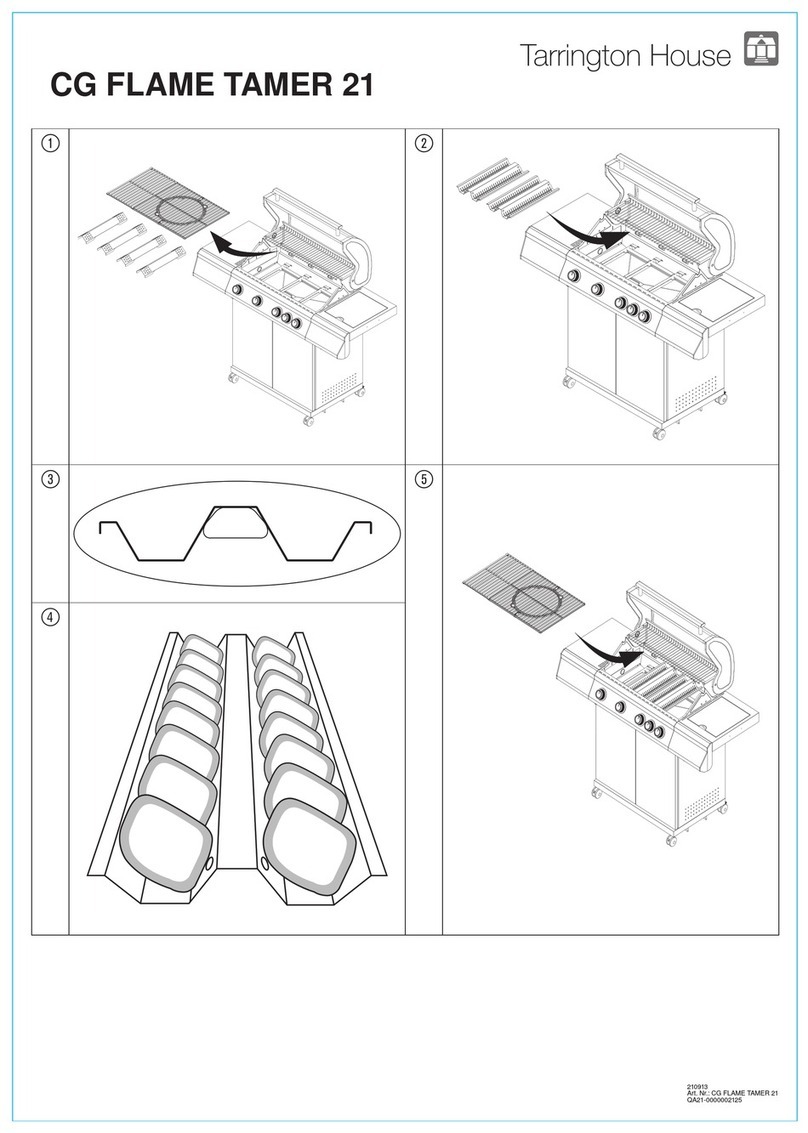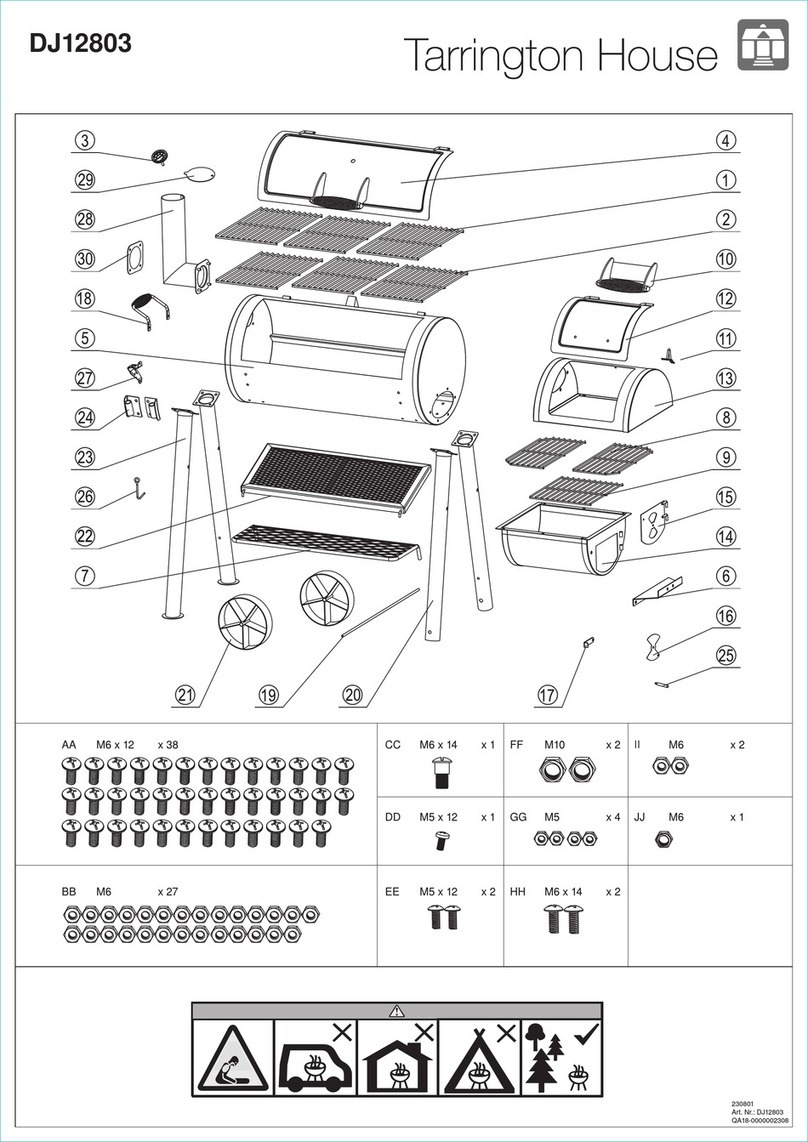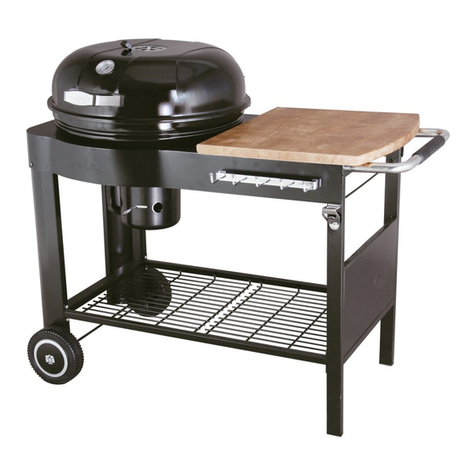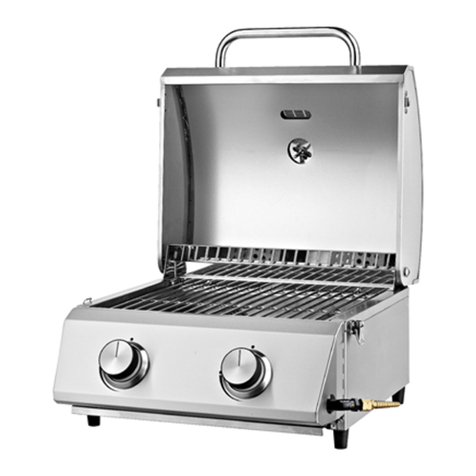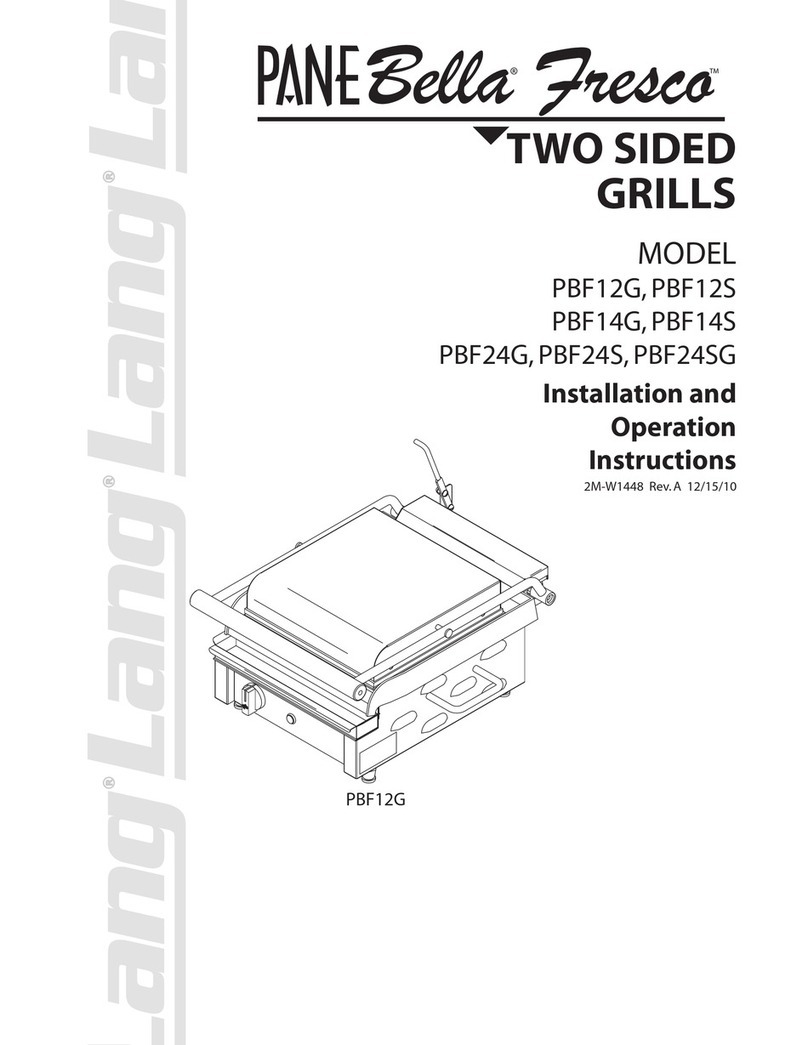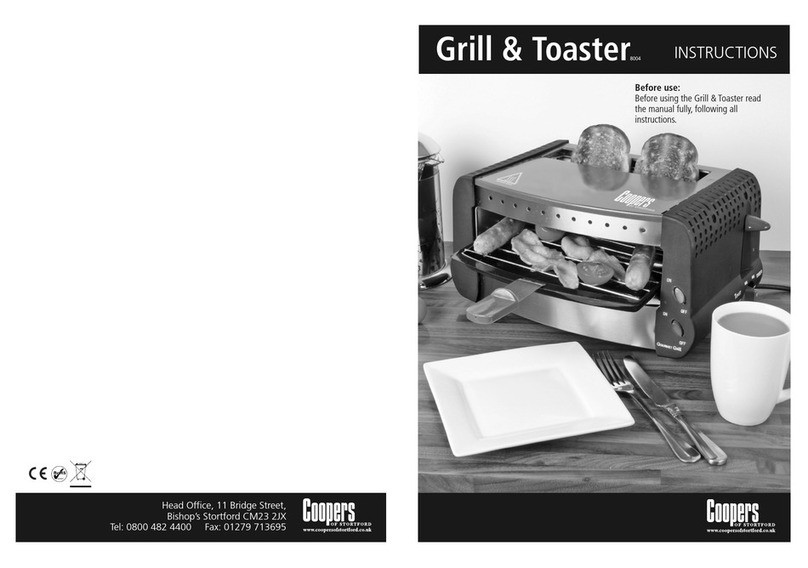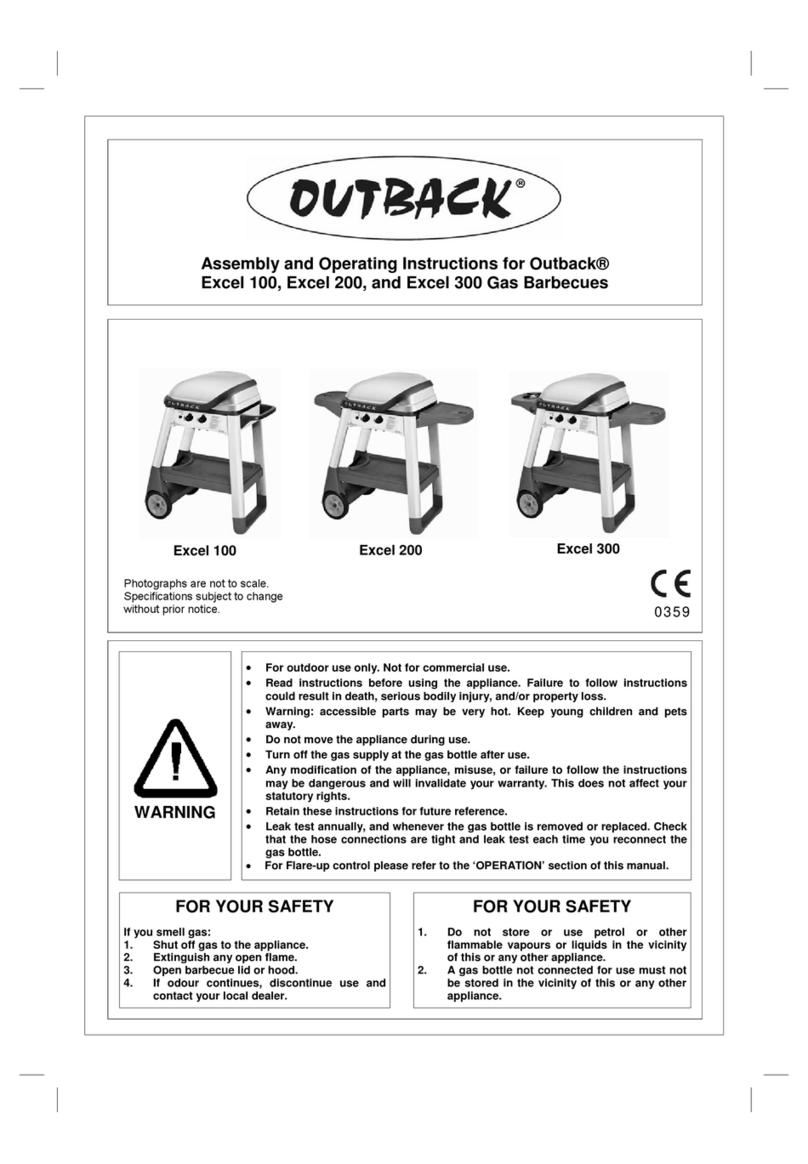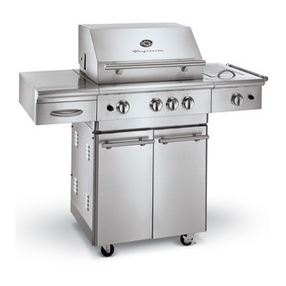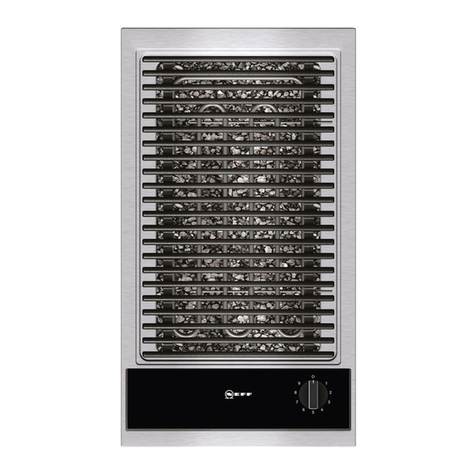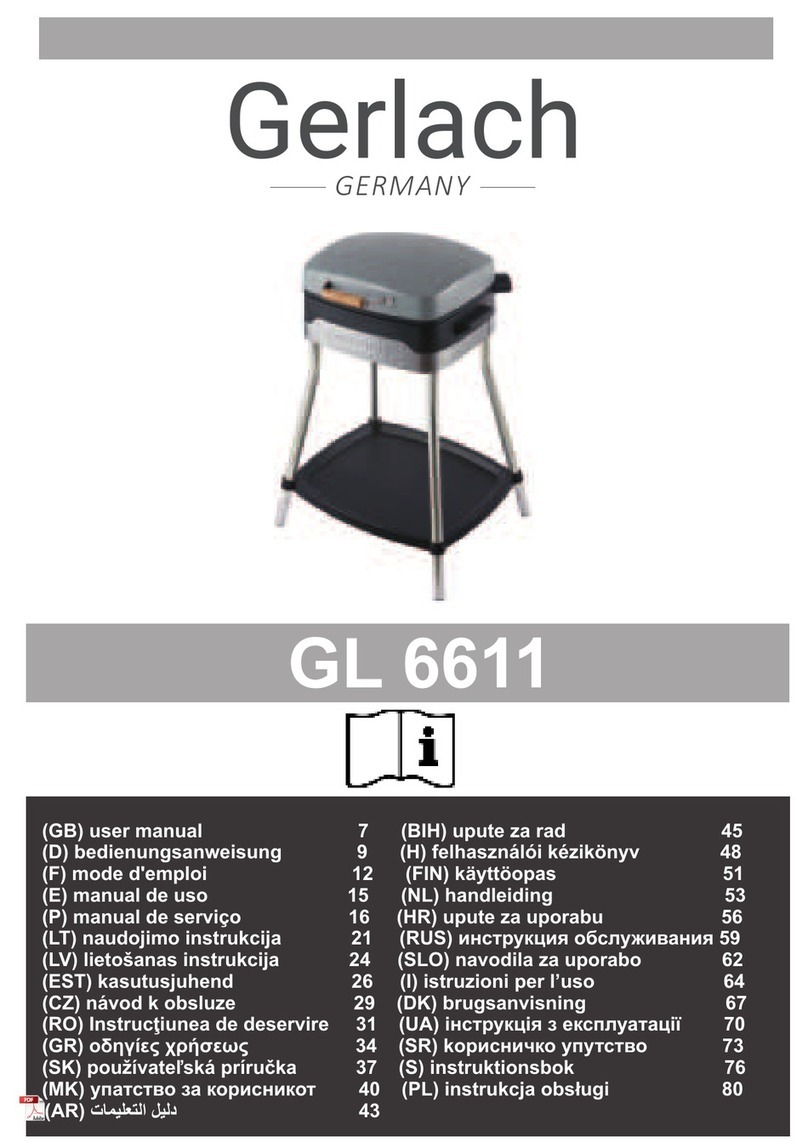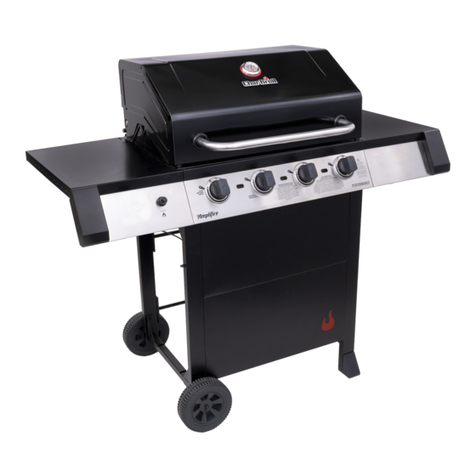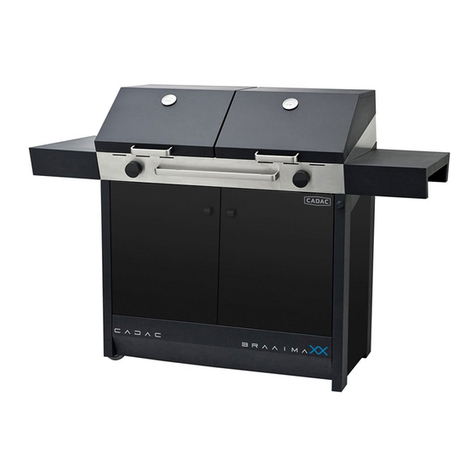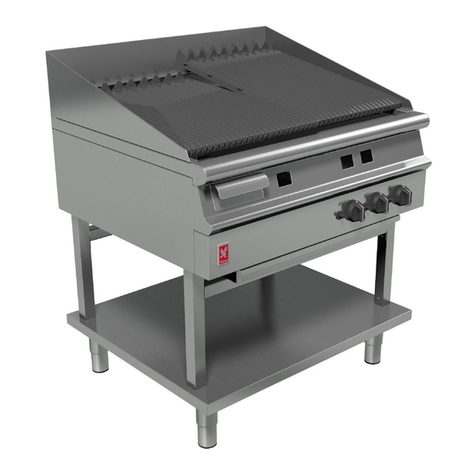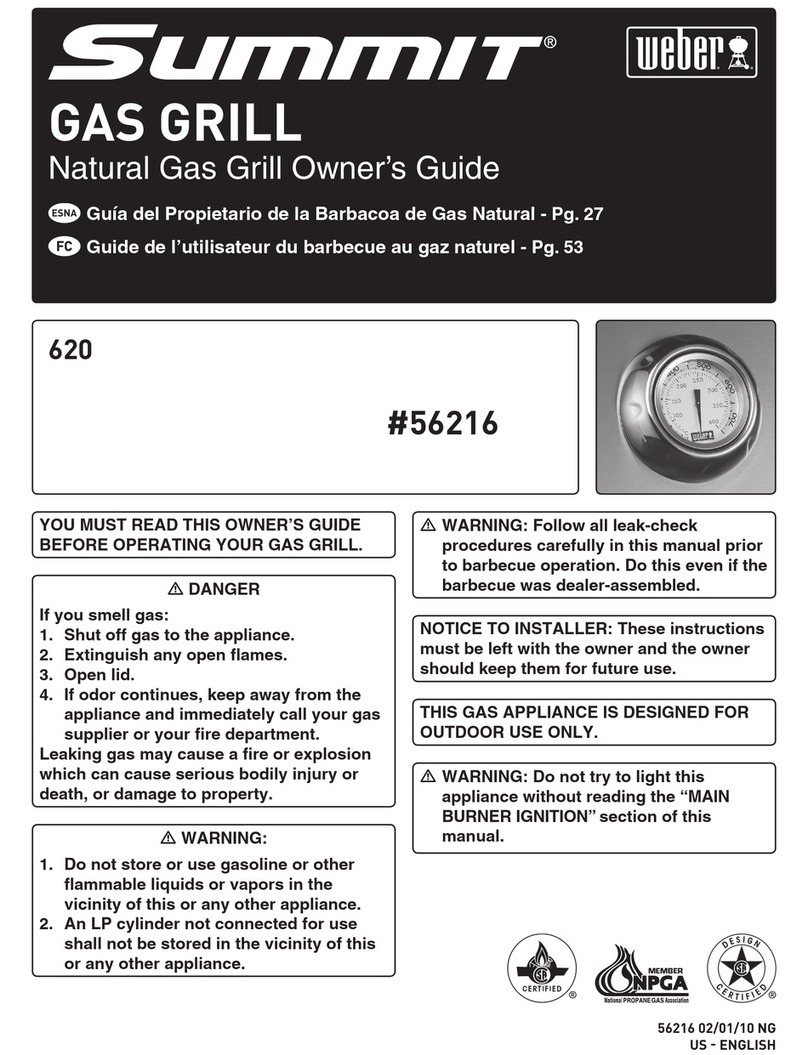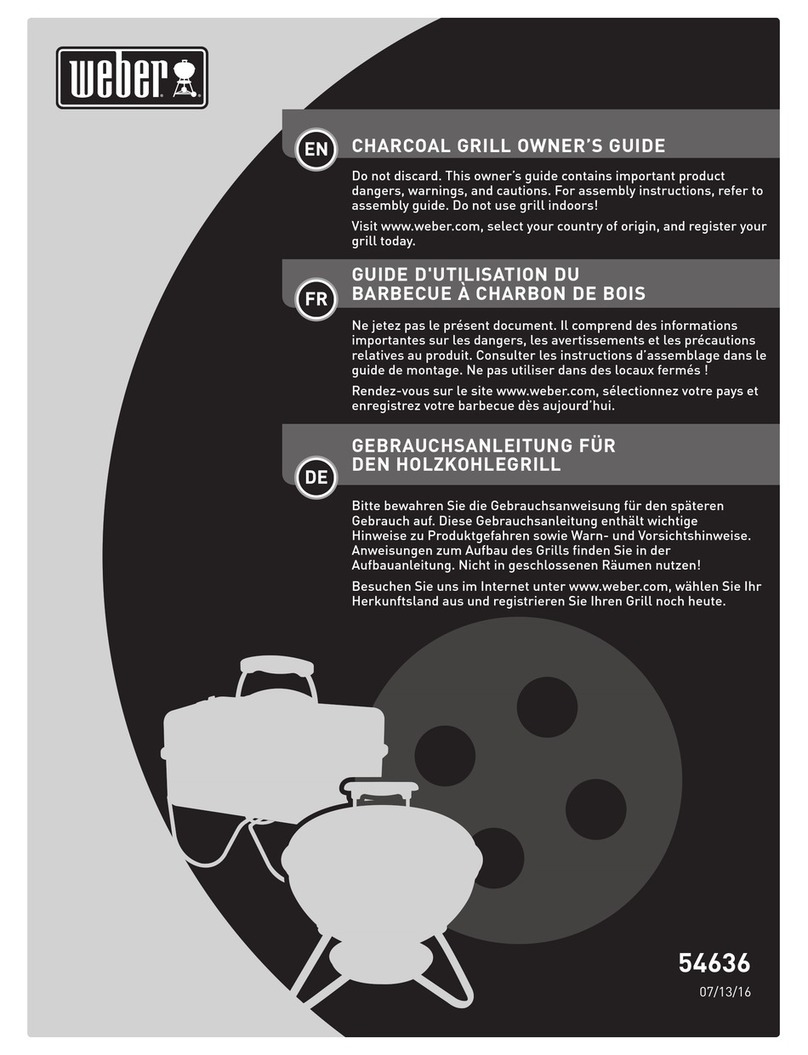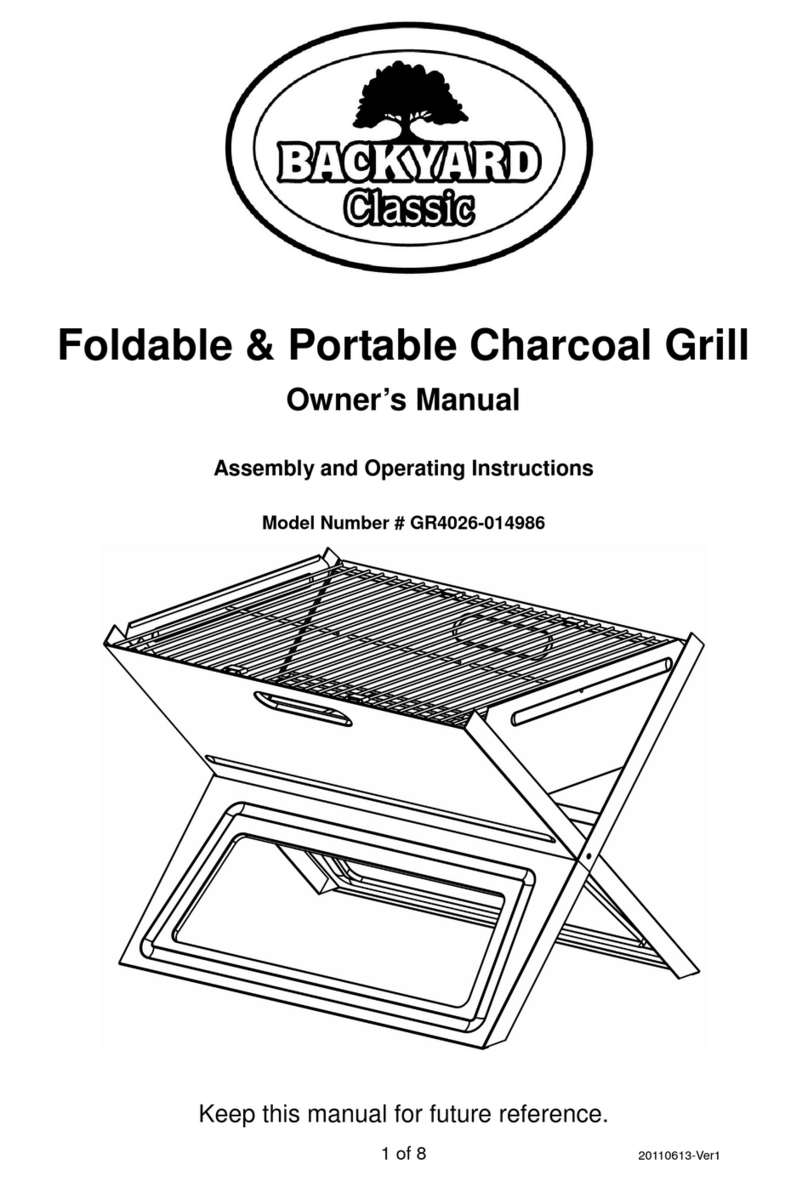
11
Halten Sie offene Flammen, wie Kerzen oder Fackeln, fern vom Gerät.
9. Lagern Sie keine brennbaren Flüssigkeiten oder flüchtige Gase in der Nähe des Geräts.
10. Lassen Sie das Gerät während des Gebrauchs nicht unbeaufsichtigt.
11. Verwenden Sie keine flüssigen Brennstoffe mit dem Gerät.
12. Lehnen Sie sich während des Anzündens des Geräts oder des Kochens nicht über die Grillfläche.
13. Dieses Gerät ist nicht geeignet für den Gebrauch durch Personen (einschließlich Kinder) mit eingeschränkten körperlichen, sensorischen oder geistigen
Fähigkeiten, sowie ohne Erfahrung und Wissen, es sei denn, sie werden von einer für ihre Sicherheit zuständigen Person beaufsichtigt und erhielten von
dieser Anweisungen, wie das Gerät zu benutzen ist.
14. Beaufsichtigen Sie Kinder stets, um sicherzustellen, dass sie nicht mit dem Gerät spielen.
15. Halten Sie alle Stromkabel und den Gasschlauch von erhitzten Oberflächen fern.
16. Erhitzen Sie keine ungeöffneten Lebensmittelbehälter aus Glas oder Metall auf dem Gerät. Es kann sich Druck aufbauen und der Behälter platzen, was zu
schweren Verletzungen oder Schäden am Gerät führen kann.
17. WARNUNG! Die maximale Belastung der Seitentische (2 kg) darf nicht überschritten werden.
SICHERHEITSHINWEISE FÜR GAS-GRILLS
1. Dieses Gerät wurde für die Verwendung mit Niederdruck-Propan und -Butan-Flüssiggas (LPG) entwickelt. Verwenden Sie kein Erdgas.
2. Öffnen Sie die Abdeckung, bevor Sie das Gerät anzünden.
3. Öffnen Sie die Abdeckung während des Gebrauchs sehr vorsichtig. Heißer Dampf, der sich im Inneren der Abdeckung ansammelt, kann beim Öffnen der
Abdeckung schnell entweichen.
4. Decken Sie das Gerät erst ab, wenn es vollständig abgekühlt ist.
5. Verwenden Sie niemals Holzkohle oder andere feste Brennstoffe in diesem Gerät.
6. Wenn die Windgeschwindigkeit 2 m/s überschreitet, verwenden Sie das Gerät nicht in Windrichtung.
7. Seien Sie vorbereitet, wenn es zu einem Unfall oder Brand kommen sollte. Wissen Sie, wo sich der Erste-Hilfe-Kasten und die Feuerlöscher befinden und
wissen Sie, wie man sie benutzt.
8. Es wird empfohlen, das Gerät mindestens einmal im Jahr von einem kompetenten Techniker Ihres örtlichen Gashändlers warten zu lassen. Versuchen Sie
nicht, dieses Gerät selbst zu warten.
SICHERHEITSHINWEISE FÜR GASANSCHLÜSSE / GASFLASCHEN / DRUCKREGLER
1. Überprüfen Sie das Gerät und die Anschlüsse regelmäßig und nach jedem Wechsel der Gasflasche auf Gasaustritt (→ Dichtigkeitsprüfung).
2. Verwenden Sie weder Streichhölzer noch anderes offenes Feuer, um nach undichten Gasstellen zu suchen.
3. Verstellen oder modifizieren Sie niemals den Gasregler oder die Gasversorgungseinheit.
4. Schließen Sie nach jedem Gebrauch die Gaszufuhr an der Gasflasche und / oder am Druckregler und trennen Sie den Gasschlauch.
5. Lagern Sie Gasflaschen nicht in Innenräumen oder in der Nähe von Wärme- oder Zündquellen.
6. Lagern Sie die Gasflasche senkrecht und niemals waagerecht, um ein Auslaufen zu verhindern und damit kein Gas unkontrolliert in die Gasleitung fließen
kann.
7. Verwenden Sie das Gerät nicht ohne den Druckregler.
8. Verwenden Sie ausschließlich Druckregler, die für den Gebrauch mit Flüssiggas (LPG) zugelassen sind und nationalen Vorschriften entsprechen. Beachten
Sie die technischen Daten (→ TECHNISCHE DATEN).
9. Stellen Sie die Gasflasche niemals unter dem Gerät auf, da dies zu schweren Verletzungen des Benutzers, anderer Personen und/oder Sachschäden
führen kann.
10. Versuchen Sie nicht, Gasverbindungen am Gerät oder am Druckregler / der Gasflasche zu trennen, wenn das Gerät verwendet wird.
SICHERHEITSHINWEISE FÜR GASSCHLÄUCHE
1. Überprüfen Sie den Gasschlauch vor und nach jedem Gebrauch - suchen Sie nach Schnitten, Rissen, übermäßiger Abnutzung oder anderen Schäden.
Wenn der Schlauch in irgendeiner Weise defekt ist, versuchen Sie nicht, das Gerät zu benutzen.
2. Lassen Sie den Gasschlauch alle ein bis zwei Jahre (oder wenn es die nationalen Bestimmungen erfordern) nur von einem qualifizierten Techniker oder
Ihrem Einzelhändler austauschen. Lassen Sie brüchige Gasschläuche und deren Verbindungen austauschen. Fragen Sie einen Spezialisten, falls Sie
Zweifel haben.
3. Schützen Sie den Gasschlauch vor Beschädigungen. Lassen Sie diesen nicht über scharfe Kanten hängen, verdrehen, pressen oder knicken Sie ihn nicht,
und setzen Sie ihn nicht übermäßiger Zugkraft aus. Halten Sie den Gasschlauch von heißen Oberflächen fern und stellen Sie sicher, dass niemand darüber
stolpern kann.
4. Verwenden Sie ausschließlich Gasschläuche, die für den Gebrauch mit Flüssiggas (LPG) zugelassen sind und nationalen Vorschriften entsprechen.
Beachten Sie die technischen Daten (→ TECHNISCHE DATEN).
5. Arbeiten an Schläuchen oder deren Ersatz dürfen nur von einem qualifizierten Experten oder Spezialisten und gemäß den Herstellerangaben durchgeführt
werden.
6. Verwenden Sie flexible Gasschläuche, die über 80°C hitzebeständig sind.
FALLS SIE GAS RIECHEN
1. Zünden Sie das Gerät niemals an, falls Sie Gas riechen.
2. Schließen Sie umgehend die Gaszufuhr am Gerät sowie an der Gasflasche und / oder am Druckregler.
3. Löschen Sie alle offenen Flammen in der Nähe des Geräts, wie z. B. Kerzen oder Fackeln. Schalten Sie alle elektrischen Geräte in der Umgebung aus.
4. Sorgen Sie für eine ausreichende Belüftung des Bereichs mit frischer Luft.
5. Öffnen Sie die Abdeckung des Geräts, um das Gas entweichen zu lassen.
6. Beenden Sie den Gebrauch und lassen Sie es nur von einer autorisierten Fachkraft reparieren, sollte das Gerät noch immer nach Gas riechen.
LIEFERUMFANG
Siehe Illustrations-Seiten am Anfang dieser Bedienungsanleitung für Details.
Stellen Sie sicher, dass der Lieferumfang vollständig und frei von möglichen Schäden ist. Wenden Sie sich an den Händler, bei dem Sie dieses Produkt gekauft
haben, wenn Sie feststellen sollten, dass Teile fehlen oder fehlerhaft sind (→ GEWÄHRLEISTUNG).
Verwenden Sie das Gerät nicht, bevor fehlende Teile nachgeliefert oder defekte Teile ersetzt worden. Die Verwendung eines unvollständigen oder beschädigten
Produkts führt zu Personen- und Sachschäden.
ZUBEHÖR
Für den sicheren und ordnungsgemäßen Gebrauch dieses Geräts werden unter anderem Zubehörteile wie z. B. Werkzeuge und Hilfsmittel benötigt: Siehe
Illustrations-Seiten am Anfang dieser Bedienungsanleitung für Details.
Versichern Sie sich, dass Sie über nötiges Zubehör und Werkzeuge für die Inbetriebnahme und Benutzung verfügen. Dies schließt eine geeignete persönliche
Schutzausrüstung ein.
Zubehör und Werkzeuge erhalten Sie im Fachhandel. Beachten Sie beim Erwerb immer die technischen Anforderungen dieses Produkts (→ TECHNISCHE
DATEN).
Fragen Sie bei Unsicherheit eine qualifizierte Fachkraft und lassen Sie sich von Ihrem Fachhändler beraten.
DE






















